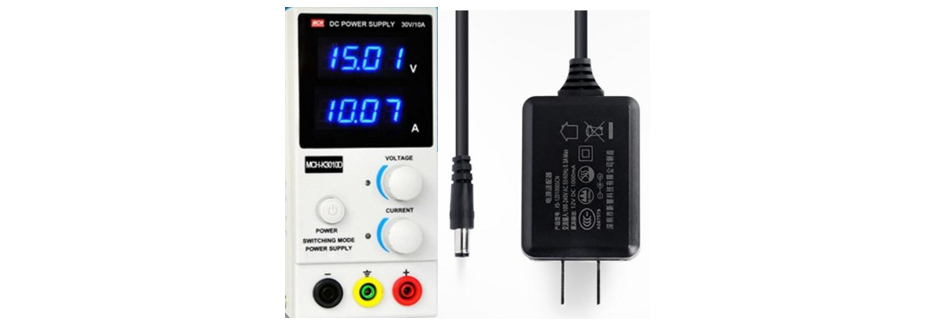
With theconstruction of smart cities, there is an increasing demand for wirelesscommunication equipment, and the demand for high-power radio stations isbecoming more and more extensive, playing a pivotal role in the fire,industrial and agricultural industries. There are certain requirements for theuse of high-power radio stations. If the operation is improper, it will cause abad experience or cause certain economic losses. The following mainly introducesthe precautions for the use of high-power radio stations.
1. Appropriate DC stabilized power supply should be selected, which requiresstrong anti-high frequency interference capability, small power supply wave,and sufficient load capacity. If necessary, it is better to have overcurrent,overvoltage protection and lightning protection. And when the power supply isselected, in addition to the required current reserve of 50%, it should benoted that the ripple should not exceed 100mv;

2. Do not use ina working environment that exceeds the environmental characteristics of digitalradio stations, such as high temperature, humidity, low temperature, strongelectromagnetic field or dusty environment. These environments have arelatively large loss to the radio, which will shorten the working life of theinternal components, and the attenuation of the signal by the strongelectromagnetic environment is very large, which is not conducive to thetransmission of wireless signals;

3. The groundwire of the digital radio should be well connected with the ground wire of theexternal device (such as PC, PLC, etc.). Otherwise, it will easily burn thecommunication interface or cause instability to the signal transmission,causing errors and other problems.
4. When testing the logarithmic radio station, it must be connected with amatching antenna or a 50Ω dummy load, otherwise the transmitter may be damaged.If the antenna is connected, the distance of the human body from the antenna ispreferably more than 2 meters to avoid injury. Do not touch the antenna whentransmitting. When the data is transmitted, the two antennas cannot be tooclose, otherwise the electromagnetic radiation generated by the transmittingend will raise the noise floor around the receiving module, resulting in poorreception at the receiving end.

5. It takes acertain amount of time for the radio station's transmitter to start (from 0W tothe maximum power is called the transmitter start time) and the receiver'ssquelch to turn on (this time varies from a few milliseconds to a few hundredmilliseconds depending on the station) Not equal), so you should pay attentionwhen sending data: if you open the transmitter and also send data (TXD) to thestation, because the transmitter has not been stable yet, the receiver'ssquelch is not turned on, the previous data Will be lost. The correct methodis: after the transmitter is fully turned on, wait for 100ms~200ms and thensend the data, so that the station will not send data to it when it starts,causing unnecessary packet loss.
6. Do not use high-power stations near some flammable places (such as coalmines) or explosive dangerous objects (detonators for detonators).

7. When themeasured distance of the radio is not ideal, it is recommended to start withthe antenna quality and antenna installation. Antennas require high gainomnidirectional or directional antennas. When the omnidirectional antenna iserected, the distance from the tower body or the lightning rod is required tobe greater than one wavelength, and the angle between the top of the antennaand the top of the lightning rod and the lightning rod is less than 45 ° In principle, the antenna should be oriented towards the side where thecommunication distance is required to be farther (or difficult to communicate),and the antenna and the connecting part of the slinger should be waterproofedand sealed with waterproof special tape. If the communication distance isrequired to be far away, the antenna erection height should be increased asmuch as possible, and an omnidirectional high-gain antenna should be selected.If it is required to enhance the signal in a certain direction, a four-ringarray or an eight-ring array antenna can be selected; when the directionalantenna is erected, a vibrator is required. Vertically to the ground, thedirection is as close as possible to the omnidirectional antenna of the centerstation. If the communication distance is long, the antenna should bedirectional to increase the antenna height and gain as much as possible. Theconnection between the antenna and the feeder should be waterproof.

8. Installationand selection of the feeder The feeder should be led to the station along thetower or pole, and tied in the middle with a wire to avoid being blown by thewind. The length of the feeder is just right, not too long, otherwise it willincrease the loss. Feeders should avoid sharp bends, and the curvature shouldbe greater than 120 degrees.
9. The use of high-power radio stations needs to be used in accordance with theregulations of the local radio management committee. It cannot be violated bythe National Radio Management Committee and used according to law. It cannot beused in illegal ways.
Chengdu EBYTE Electronic Technology Co., Ltd. independently developed andproduced a series of radio stations for the current IoT environment. The E90series has been approved by the National Radio Management Committee and usersdo not need to be certified.